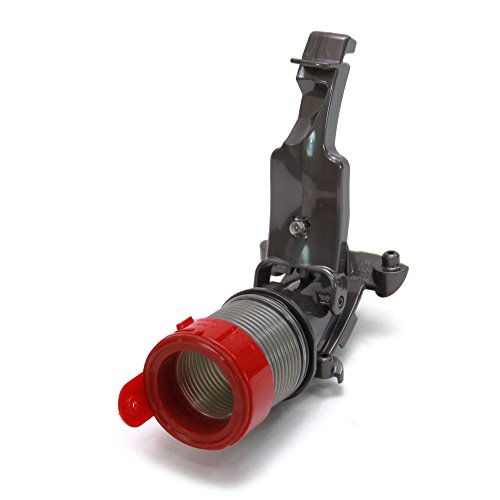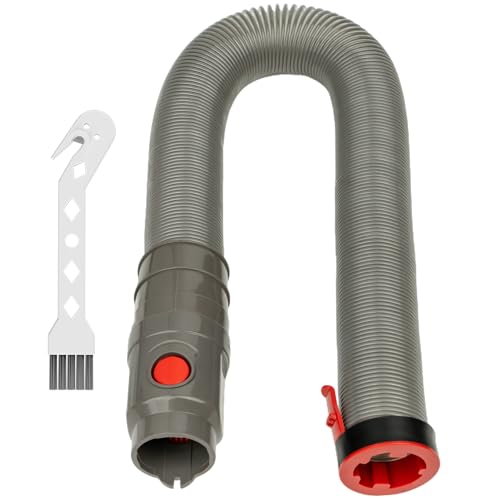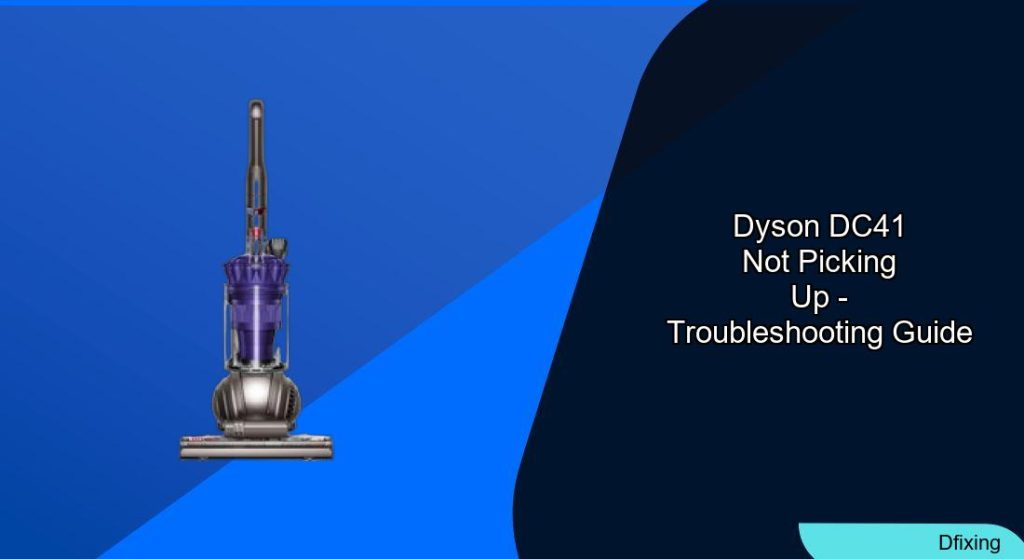The Dyson DC41 is a powerful vacuum cleaner known for its strong suction capabilities. However, like any mechanical device, it can develop issues over time that affect its performance. One of the most common complaints from DC41 owners is reduced suction power, particularly at the brush head or wand.
Affiliate disclosure: As an Amazon associate, We'll earn a commission for every successful order through our affiliate links in the article. However, you won’t be charged anything for this.
If you’ve noticed your Dyson DC41 isn’t picking up debris as effectively as it used to, don’t rush to replace it just yet. Most suction problems can be resolved with proper troubleshooting and maintenance. This guide will walk you through the common causes of suction loss in the Dyson DC41 and provide detailed solutions to restore your vacuum’s optimal performance.
Common Causes of Suction Loss in Dyson DC41
When your Dyson DC41 starts losing suction power, several components could be at fault. Understanding these potential issues is the first step toward effective troubleshooting.
Damaged or Dislodged Hoses
The internal hose system of your Dyson DC41 plays a crucial role in maintaining proper suction. There are several hoses within the vacuum, including the main external hose and smaller internal ones that connect different components.
Signs of hose problems:
* Suction works better when the vacuum is leaned back
* Inconsistent suction between the brush head and wand
* Visible damage or tears on the external hose
* Unusual noise during operation
How to check for hose damage:
1. Unplug your vacuum for safety
2. Inspect the main external hose for visible tears or cracks
3. Run your hand along the hose to feel for less obvious damage
4. Check if the hose is properly connected at both ends
5. Examine internal hoses if accessible (may require partial disassembly)
Fixing hose issues:
If you discover a damaged hose, replacement is typically the best solution. For a dislodged hose, reconnecting it properly may resolve the issue.
To replace the hose:
1. Unplug the vacuum
2. Lift the wand cover
3. Separate the wand from the main body
4. Press the release buttons to detach components
5. Remove the damaged hose
6. Install the new hose, ensuring proper alignment
7. Reassemble the vacuum by securing the hose base, aligning the wand, and reattaching the canister
Replacement hoses can be purchased directly from Dyson or from reliable parts suppliers like espares.com.
If you’ve identified that the main hose is damaged, replacing it is essential to restore suction.

Official Dyson OEM replacement with part number 922009-01

Genuine Dyson internal hose for DC41 models with part number 920682-01

Premium quality hose for DC41/DC65 with grey/red color

Stretchable hose (9.5ft) for DC41 with part number 920765-03
System Blockages
Blockages are among the most common causes of suction problems in the Dyson DC41. These can occur in various parts of the vacuum, including the hose, brush head, cyclone assembly, and air pathways.
Common blockage locations:
* Main hose
* Wand
* Brush head
* Cyclone assembly
* Air intake and exhaust areas
* Connection points between components
How to clear blockages:
For hose blockages:
1. Disconnect the hose from the vacuum
2. Hold it up to a light source or use a flashlight to look inside
3. Use a long, thin object (like a straightened wire hanger) to carefully dislodge any debris
4. For stubborn blockages, try using needlenose pliers to extract the debris
5. Be gentle to avoid damaging the hose liner
For brush head blockages:
1. Turn the vacuum upside down
2. Remove the bottom plate (usually secured with screws)
3. Inspect the brush roll and surrounding area for debris
4. Clear any hair, string, or other materials wrapped around the brush
5. Check the air channels leading from the brush head for blockages
For cyclone assembly blockages:
1. Remove the dust bin
2. Inspect the cyclone assembly for visible blockages
3. Clean any debris that may be restricting airflow
For wand blockages:
1. Detach the wand from the vacuum
2. Look through it to check for obstructions
3. Use a long, narrow object to push out any blockages
4. Some users have reported finding unexpected items like plastic caps from hair spray bottles lodged in their wands
Remember to check all connection points between components, as even small debris can create significant suction loss if it interferes with the airflow path.
Advanced Troubleshooting for Persistent Suction Issues
If basic blockage clearing doesn’t resolve the suction problems, you may need to look deeper into the vacuum’s systems.
Faulty Changeover Mechanism
The changeover mechanism in the Dyson DC41 controls the transition of suction between the hose and brush head. When this mechanism fails, it can significantly impact suction distribution.
Signs of changeover mechanism problems:
* Suction works in one mode but not another
* Inconsistent suction when switching between floor and above-floor cleaning
* Strange clicking or grinding noises when changing modes
Addressing changeover mechanism issues:
This component is more complex and may require professional diagnosis. If you suspect the changeover mechanism is faulty, consider taking your vacuum to a local repair shop or contacting Dyson customer support at 1-866-314-8881.
Brush Roll Problems
The brush roll is essential for effective carpet cleaning. When it’s not functioning properly, it can seem like the vacuum has lost suction power.
Common brush roll issues:
* Tangled hair and fibers restricting movement
* Worn-out bristles reducing cleaning effectiveness
* Damaged or worn-out brush roll motor
* Belt issues (if applicable)
Fixing brush roll problems:
1. Turn the vacuum upside down and remove the bottom plate
2. Carefully cut away any tangled hair or fibers using scissors
3. Clean the brush roll thoroughly
4. Check for worn-out bristles – if severely worn, the brush roll may need replacement
5. Inspect the brush roll motor for signs of damage or wear
6. Reassemble the bottom plate once cleaning is complete
If the brush roll’s bristles are worn out or damaged, replacing the brush roll can significantly improve cleaning performance.
Search term for Amazon: Dyson DC41 brush roll replacement
Seal and Gasket Inspection
Air leaks from worn seals and gaskets can significantly reduce suction power. These components create airtight connections between different parts of the vacuum.
Where to check for seal issues:
* Around the dust bin
* At hose connection points
* Where the wand connects to the main body
* Around the cyclone assembly
Addressing seal problems:
1. Inspect all seals and gaskets for cracks, tears, or deformation
2. Clean dirty seals with a damp cloth
3. Replace any damaged seals or gaskets
4. Ensure all components fit together snugly when reassembled
Filter Maintenance
Clogged filters restrict airflow and reduce suction. The Dyson DC41 has multiple filters that require regular maintenance.
Filter maintenance steps:
1. Locate the pre-motor and post-motor filters
2. Remove them according to the user manual instructions
3. Wash the filters with cold water only (no detergents)
4. Squeeze out excess water
5. Allow filters to dry completely for at least 24 hours before reinstalling
6. Ensure filters are properly seated when reinstalled
To maintain optimal suction, replacing the filters regularly is essential.

Includes pre/post filters with H12 efficiency for DC41 models

Premium HEPA filters with 2-3 month recommended replacement

High-efficiency filters with reusable design for DC41 models

Eco-friendly filters for DC41 with HEPA filtration system
Real-World Solutions from DC41 Owners
Sometimes the most valuable insights come from other vacuum owners who have faced and resolved similar issues.
Case Study: The Hidden Blockage
One DC41 owner reported persistent suction loss despite thoroughly cleaning visible components. After extensive troubleshooting, they discovered a clear plastic cap from a hair spray bottle lodged inside the plastic handle of the wand. This small object created a significant blockage that standard cleaning methods missed.
Lesson learned: When troubleshooting, check even the less obvious areas. Use a flashlight to inspect deep into components and consider using tools like a wire hanger to probe areas you can’t easily see.
Case Study: The Paper Puck
Multiple users reported no suction in their wand hose despite trying standard cleaning methods. One user eventually looked down the extension tube and used a narrow stick to dislodge what turned out to be a dense “puck” of shredded paper along with a small plastic piece.
Lesson learned: Blockages can become compacted and difficult to detect. Sometimes unconventional inspection methods and tools are needed to reveal and remove hidden obstructions.
Preventative Maintenance Tips
Preventing suction problems is easier than fixing them. Incorporate these maintenance practices into your routine to keep your Dyson DC41 performing optimally.
Regular Cleaning Schedule
- After each use: Empty the dust bin when it reaches the MAX line (or sooner)
- Weekly: Check the brush roll for hair and debris
- Monthly: Inspect the hose and wand for blockages
- Every 3-6 months: Wash the filters according to manufacturer instructions
Proper Vacuum Technique
- Avoid vacuuming large objects that could cause blockages
- Don’t vacuum wet areas or liquids unless your model is specifically designed for this
- Move the vacuum slowly over carpets to allow the brush roll to effectively agitate and clean
- Use the appropriate attachments for different surfaces and cleaning tasks
Storage Considerations
- Store your vacuum in a clean, dry area
- Keep the hose straight or loosely coiled to prevent creasing
- Ensure all components are properly attached before storage
Frequently Asked Questions (FAQ)
Why does my Dyson DC41 have good suction at the hose but not at the brush head?
This typically indicates a blockage in the pathway between the hose and brush head, or an issue with the changeover mechanism. Check for blockages in the wand and brush head connections. Also, ensure the brush roll is clean and spinning freely. If these steps don’t help, the internal hose connecting to the brush head might be damaged or dislodged.
How often should I clean the filters on my Dyson DC41?
Dyson recommends washing the filters at least once every three months. However, if you vacuum frequently or have pets, you may need to clean them more often. Always allow filters to dry completely (at least 24 hours) before reinstalling them.
My Dyson DC41 makes a high-pitched noise and has reduced suction. What’s wrong?
A high-pitched noise often indicates restricted airflow. This could be due to a blockage somewhere in the system or dirty filters. Check all potential blockage points and clean or replace the filters. If the noise persists, there might be an issue with the motor that requires professional attention.
Can I use my Dyson DC41 without filters while they’re drying?
No, you should never operate your Dyson without all filters properly installed. Doing so can damage the motor and void your warranty. It’s a good idea to have a spare set of filters so you can use your vacuum while one set is drying.
Is it worth repairing my Dyson DC41 or should I buy a new vacuum?
Most suction issues can be resolved with proper maintenance or minor repairs. Given the initial investment in a Dyson, it’s usually more economical to repair rather than replace. However, if your vacuum is very old or has multiple significant issues, replacement might be more cost-effective. Consider the cost of repairs versus a new model before deciding.
Conclusion
Suction problems with your Dyson DC41 can be frustrating, but most issues can be resolved with proper troubleshooting and maintenance. By systematically checking for blockages, inspecting hoses, maintaining filters, and addressing mechanical issues, you can restore your vacuum’s performance and extend its lifespan.
Remember that regular maintenance is key to preventing future problems. Establish a cleaning routine for your vacuum just as you would for your home, and you’ll enjoy powerful suction and effective cleaning for years to come.
If you’ve tried all the troubleshooting steps without success, don’t hesitate to contact Dyson customer support or a local vacuum repair specialist. Sometimes professional diagnosis is necessary to identify and fix more complex issues.







